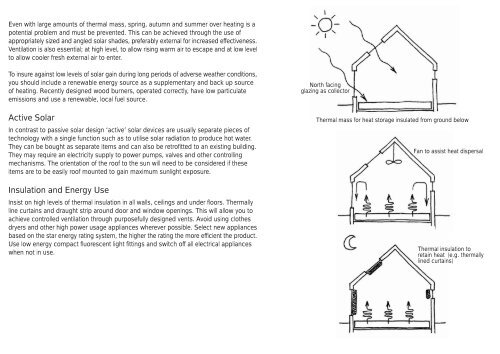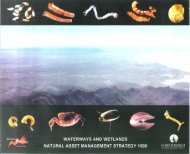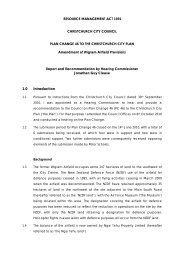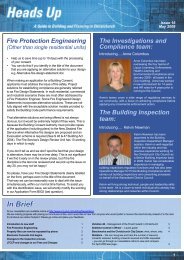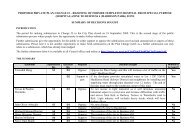Sustainable Building Guide - Christchurch City Council
Sustainable Building Guide - Christchurch City Council
Sustainable Building Guide - Christchurch City Council
Create successful ePaper yourself
Turn your PDF publications into a flip-book with our unique Google optimized e-Paper software.
Even with large amounts of thermal mass, spring, autumn and summer over heating is a<br />
potential problem and must be prevented. This can be achieved through the use of<br />
appropriately sized and angled solar shades, preferably external for increased effectiveness.<br />
Ventilation is also essential; at high level, to allow rising warm air to escape and at low level<br />
to allow cooler fresh external air to enter.<br />
To insure against low levels of solar gain during long periods of adverse weather conditions,<br />
you should include a renewable energy source as a supplementary and back up source<br />
of heating. Recently designed wood burners, operated correctly, have low particulate<br />
emissions and use a renewable, local fuel source.<br />
Active Solar<br />
In contrast to passive solar design ‘active’ solar devices are usually separate pieces of<br />
technology with a single function such as to utilise solar radiation to produce hot water.<br />
They can be bought as separate items and can also be retrofitted to an existing building.<br />
They may require an electricity supply to power pumps, valves and other controlling<br />
mechanisms. The orientation of the roof to the sun will need to be considered if these<br />
items are to be easily roof mounted to gain maximum sunlight exposure.<br />
Insulation and Energy Use<br />
Insist on high levels of thermal insulation in all walls, ceilings and under floors. Thermally<br />
line curtains and draught strip around door and window openings. This will allow you to<br />
achieve controlled ventilation through purposefully designed vents. Avoid using clothes<br />
dryers and other high power usage appliances wherever possible. Select new appliances<br />
based on the star energy rating system, the higher the rating the more efficient the product.<br />
Use low energy compact fluorescent light fittings and switch off all electrical appliances<br />
when not in use.<br />
North facing<br />
glazing as collector<br />
Thermal mass for heat storage insulated from ground below<br />
Fan to assist heat dispersal<br />
Thermal insulation to<br />
retain heat (e.g. thermally<br />
lined curtains)


